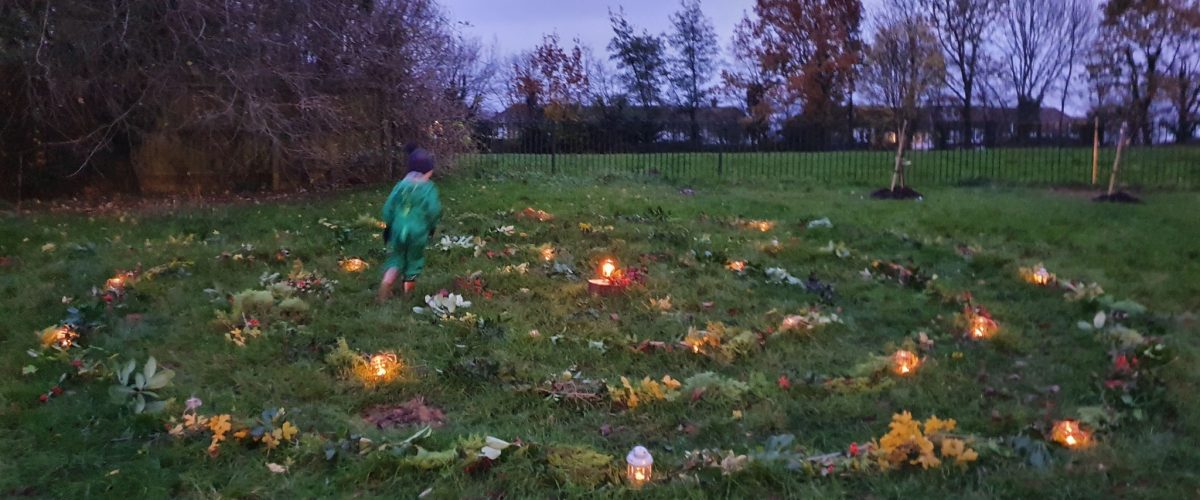Winter in Scotland is cold and dark. The sun struggles to scrape together seven hours of daylight, and each day travels a little lower across the gray sky.
For the emerging agrarian societies of pre-history, making spiritual sense of the growing darkness was important for their understanding of the world.

Isobel at the Cannog Centre explaining Yule traditions.
“The 21st of December or there about is the darkest night, the longest night and for people all over the world this has been something quite puzzling,” explains Isobel, an interpreter at the Scottish Crannog Centre on Loch Tay. Standing in the dying light of the setting sun, those Iron Age people confronted the darkness and prayed the sun would be reborn.
Cultures and faith communities across the globe have celebrated the winter solstice for thousands of years, and now Christians are joining them.
Coming back to nature
“People are coming back to nature in droves,” according to Beth Norcross, who runs the Center for Spirituality and Nature. “And it’s a deep need, it’s deep yearning that’s pulling us back to our original way of finding God.”
Drawing on her background in theology and ecology, Norcross helps churches, individuals and organizations deepen their spirituality by reconnecting with the environment through walks, workshops and mindfulness resources.
The United Kingdom’s People and Nature Survey began collecting data in April 2020 on residents’ engagement with nature during the global pandemic and in 2022 reported 45% of people in the UK were spending more time outside in nature than before the pandemic. Almost 40% said nature was important to their personal well-being, and an incredible 68% of those surveyed said they were taking more time daily to do things like listen to songbirds and observe butterflies.
Researchers at the University of Vermont discovered that not only did participants in their own study spend more time in nature during the pandemic, but their reasons for doing so had changed as well. In addition to mental health, exercise, exposure to natural beauty and a sense of identity, 22% of respondents listed spirituality as a reason they valued spending time outdoors.
“It’s a return to the garden that we’re all seeking.”
“There’s something about nature that opens us up and makes us sense and feel the presence of God,” Norcross said. “This is in both our biological DNA and our spiritual DNA. It’s a return to the garden that we’re all seeking.”
Nature’s cyclical patterns can be a steadying presence during times of uncertainty, both pandemic and personal.
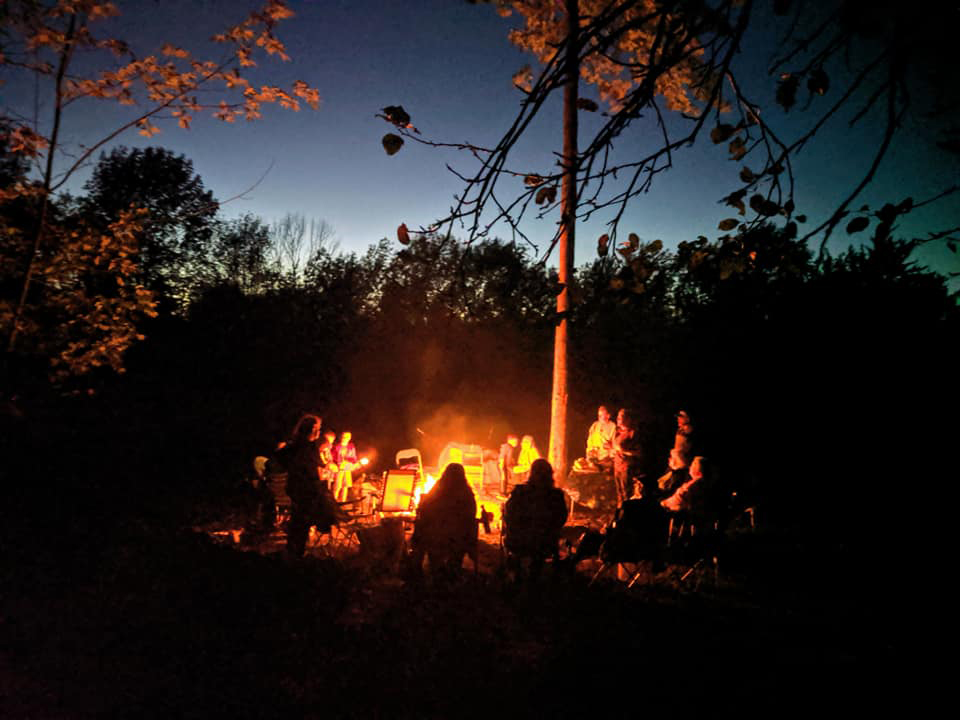
Finger Lakes Forest Church
Taking stock
Joe Scianna began incorporating an observance of the winter solstice into his faith practice 10 years ago.
“It was the result of a crisis of faith and not knowing where I stood spiritually,” he said. Solstice “is a time to take stock of oneself, where you are, what you might like to see in the season ahead.”
With this in mind, he bought Chinese paper lanterns to release with his family’s intentions for the coming year. While the Chicago winter weather proved too cold for a lantern launch, it ignited in Scianna a love for the winter solstice.
“I believe we are spiritual people,” he explained. “For years that has meant church membership. But over the course of time, people have begun to question beliefs they feel no longer serve them. (Solstice) is an opportunity to see ourselves as all of nature, in a dormant season but not dead. Embracing the time of introspection. Looking forward to the renewal of spring but also being completely in the moment.”
Children are particularly good at being in the moment and engaging with nature, so more parents are tapping into the natural world as a way to pause during the chaos of the Christmas season. Crafting outdoor ornaments from natural materials and birdseed as a form of creation care is popular with many families, as are children’s books like The Shortest Day, which explains the winter solstice, and All Creation Waits, an Advent devotional featuring readings and illustrations of the animal world in winter. Some families are focusing on ancient seasonal traditions like gathering evergreens to decorate indoor spaces, lighting candles or burning a Yule log with or without s’mores.
“In Celtic traditions or Western Germanic traditions there seems to be something around fire and asking the sun to come back through light and through flames,” said Isobel at the Crannog Centre. “The yule log would be a large log or pieces of a large log that you would burn throughout this time. It’s a way of bringing back that light to your life.”
In addition to enjoying warmth and fellowship around the fire, a member of a parenting group on Facebook says her family uses the time to focus on the rebirth of the sun and the start of the new year. “We make Yule logs out of toilet paper rolls and fill them with scraps of paper with wishes and intentions or prayers. Wrap the whole thing in colorful tissue paper and throw it in the fire!”
The spiral
Another ancient symbol of the season is the spiral. Neolithic builders carved a triple spiral into the chambered cairn at Newgrange in Ireland that is illuminated by the rising sun of the winter solstice.
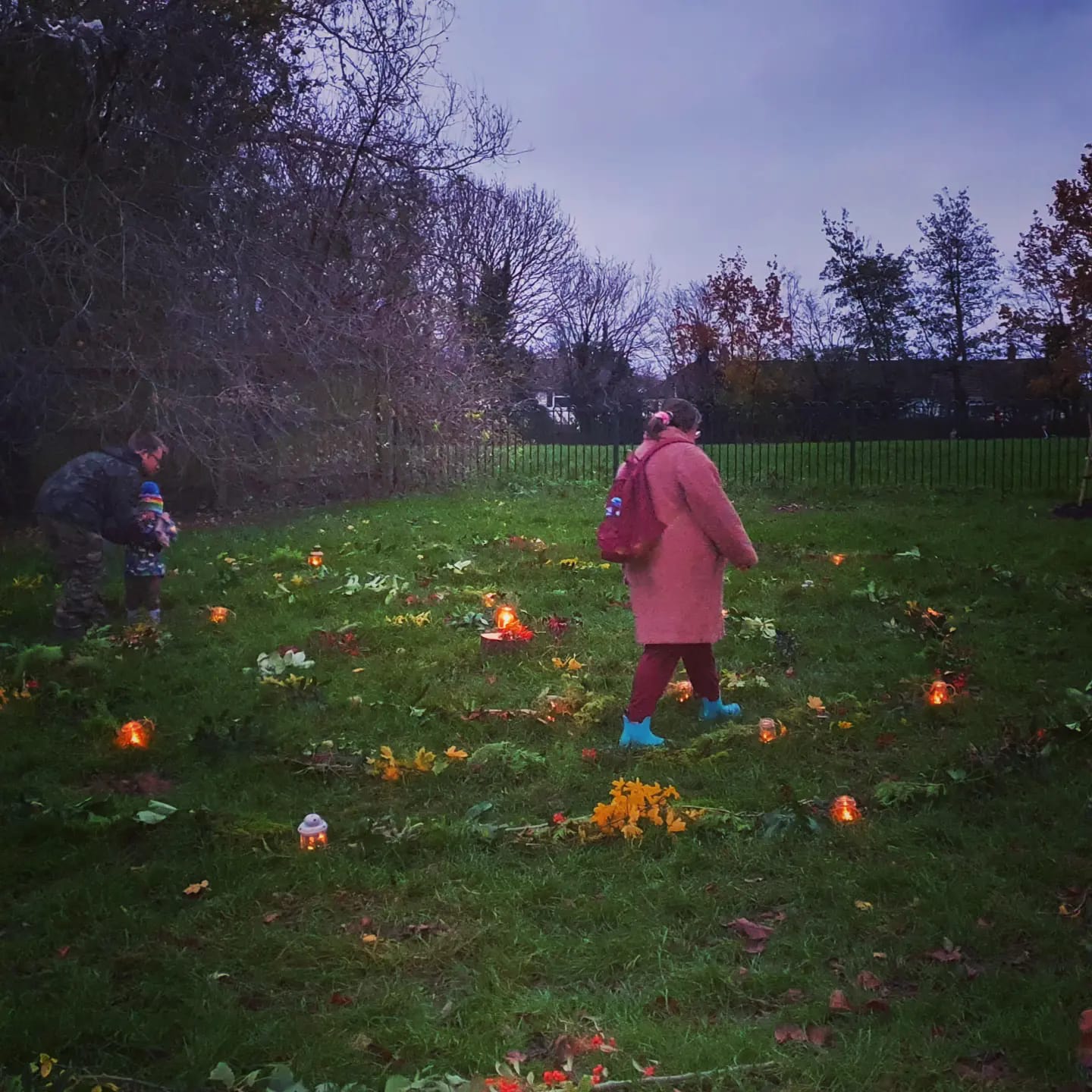 Amy Simpkins has made the winter solstice spiral her “spiritual touchpoint” during the holidays. “Solstice, the spiral inward to the darkness and the pull to rest and reflect, makes visceral sense to me in my physical body and staying away from some of the hectic seasonal energy has helped my mental health as well,” she said.
Amy Simpkins has made the winter solstice spiral her “spiritual touchpoint” during the holidays. “Solstice, the spiral inward to the darkness and the pull to rest and reflect, makes visceral sense to me in my physical body and staying away from some of the hectic seasonal energy has helped my mental health as well,” she said.
Simpkins and her family construct a large spiral on the ground with a lit candle in the center of the spiral. Often spiral walks are created from greenery, rocks or other natural materials.
“Each person walks into the spiral and lights a candle from a candle positioned in the center of the spiral and then walks back out,” she explained.
Tabletop versions of this activity feature a smaller spiral with a central candle from which participants can light their tapers or a movable candle that advances toward the center to mark daily progress leading up to the winter solstice.
Just what the spiral symbolizes is left up to those walking it. For some it’s a way to honor the darkness of the year and the natural world’s cycles of death and rebirth. Walking the spiral might raise questions, such as, “What needs to die with the old year and what intention will I carry into the new year?” Families with children often focus on the light within each person and how they might share that light with others.
Parishioners at St. Edward the Confessor Burgess Hill in West Sussex, England, created an Advent spiral from holly berries and clusters of greenery gathered in the churchyard. Vicar Jules Middleton compared the spiral to the darkness of Advent with Jesus the light at its center before members took turns walking the spiral and placing their lit candles along the path as they exited.
This outdoor worship service is part of the new Garden Church meeting monthly in St. Edward’s community garden. Part of the church’s new intergenerational vision for reaching the community, the Garden Church also gathered for the summer solstice to watch the sunset and read prayers from the Celtic tradition.
“If we believe God is the Creator of the world and everything around us, then there shouldn’t be any theological issue for us in recognizing different times and seasons,” Middleton said.
Forest Church
Inspired by the peace he felt working in his own garden, naturalist Bruce Stanley moved his faith practice outdoors and began exploring a new way of being community that he calls “Forest Church.”
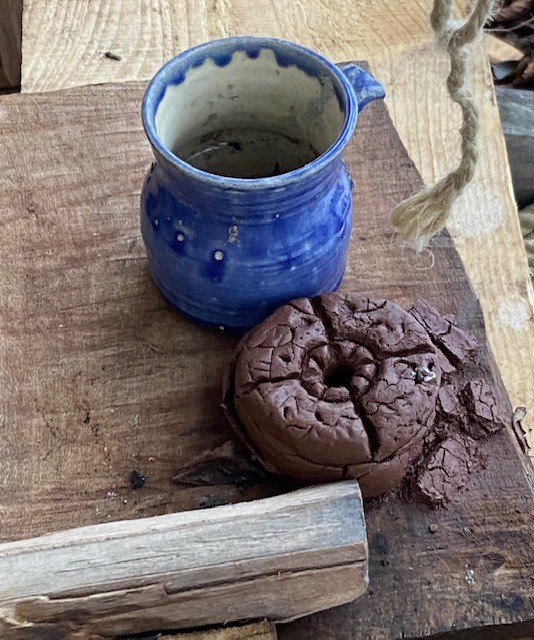
Traditional Yule cake in the shape of the sun at Crannog Centre
“What’s unique about Forest Church is that we’re trying to participate with nature,” Stanley explained. “The environment we’re in is the sermon, and there are moments that are so breathtakingly beautiful or impactful, that becomes the worship.”
Mid-Wales Forest Church, where Stanley is facilitator, meets on the third Sunday of the month for rituals, walks or workshops on the environment. Near the solstices and equinoxes, members come together to celebrate with a meal and a reflection drawn from the location. Past celebrations have included anything from a labyrinth on the beach to a meditation at the ruins of a Roman outpost, to Sensio Divina in a sunken forest.
The practice of engaging God in God’s creation has resonated with so many individuals and faith communities that Forest Churches, or Garden Churches in the case of St. Edward’s, are springing up across the globe and creating new ways to worship.
“As long as humans have existed, they’ve intuited a sacred presence in the woods, mountains, oceans and deserts, and sensed sacred qualities in the plants and animals that share our world,” noted Kenneth McIntosh, pastor of Finger Lakes Forest Church in Honeoye, N.Y. “In the 21st century, this intuitive sense of sacred nature is strengthened by scientific and philosophical discoveries proving the one-ness, the interconnectedness, of living beings.”
Attracting those not interested in church
McIntosh, who has written a book on Celtic spirituality and presented workshops on the subject at the Wild Goose Festival, had been interested in the possibility of “spiritual community-on-the-trail” and started Finger Lakes in 2018 after meeting with Bruce Stanley in Wales. “The nature-mysticism of Celtic spirituality appeals to today’s increasingly ‘spiritual but not religious’ crowd, and also to the growing number of people who are concerned for eco-justice,” he said.
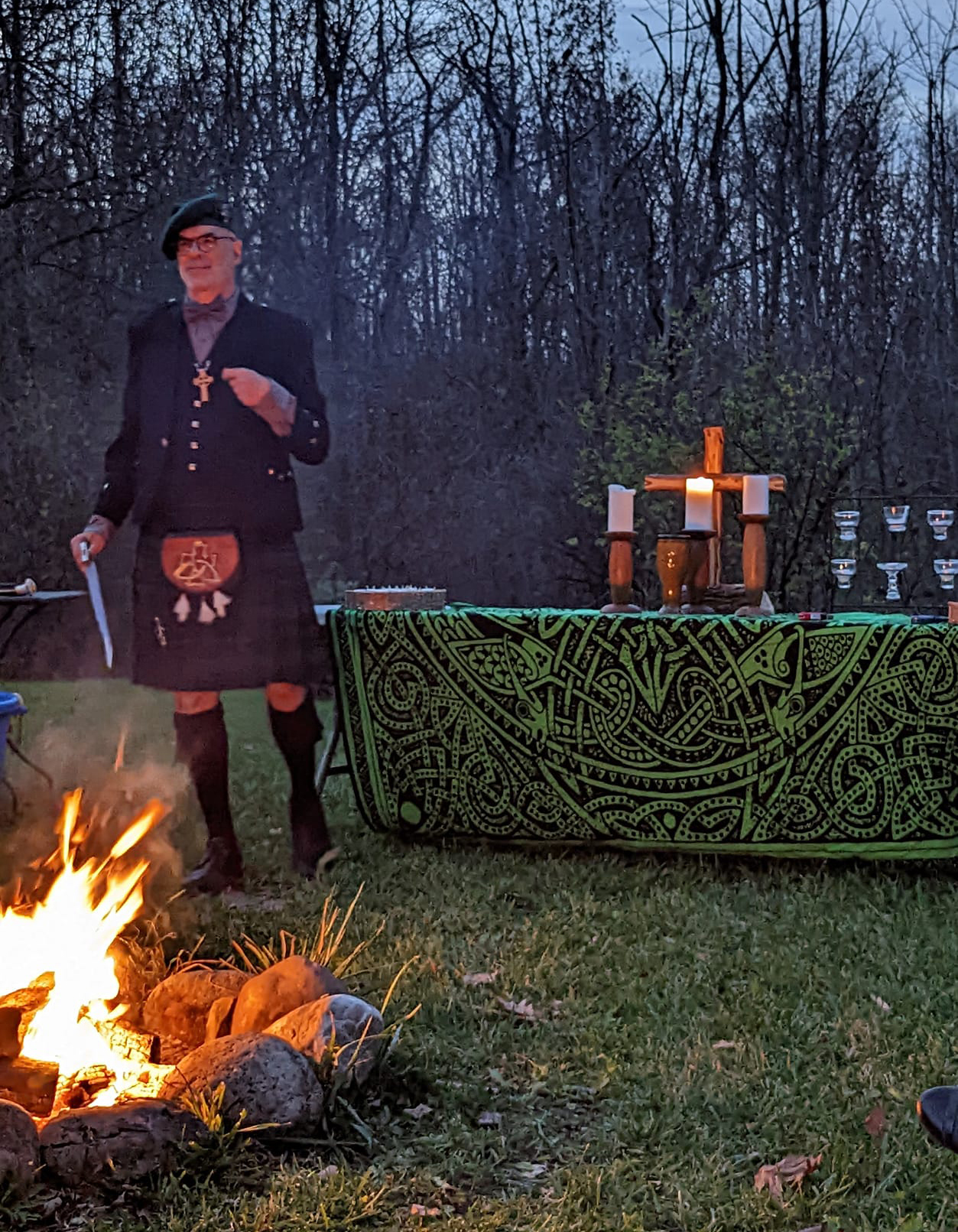
Kenneth McIntosh with Finger Lakes Forest Church
Like many Forest Churches, this active and adventurous group in New York is attracting attendees who are not interested in a traditional church service. Some have experienced spiritual abuse in “institutional” churches and feel safer meeting outdoors where the emphasis is on God speaking through nature as opposed to a written text or an ecclesiastical hierarchy. “There is also a broadly inclusive and welcoming aspect to Celtic spirituality that resonates with today’s needs,” McIntosh said.
Forest Churches like Finger Lakes are finding creative ways to celebrate the winter solstice. Sharing food and the warmth of the fire along with poetry readings, liturgies and prayers are central to some solstice celebrations. Gathering evergreens and crafting wreaths and candle holders to symbolize eternal life is another way churches are journeying together through the season.
A Forest Church in Lincoln, England, visited a local nature reserve and after a meal together created a meal for the birds, “in remembrance of the Creator who created us all, who gifts us life and ability, love and sorrow, and always new dawn each morning to follow our darkest nights.”
Many Forest Churches are greeting the darkness with candles, and one church added sparklers to the festivities.
Wooburn Forest Church, led by Paul Cudby, an early practitioner of Forest Church and adviser to the bishop of Birmingham on new religious movements, held a meditative woodland walk organized around eight “stations” where participants could see, hear, smell, touch and listen to nature.
“By connecting to the natural world, we can connect to God’s heartbeat.”
“By connecting to the natural world, we can connect to God’s heartbeat,” Cudby said. “So praying with the natural world can open doors we might not expect.”
Historical roots
Cudby himself followed an unexpected path when he undertook a three month leave of absence to study Modern Paganism, the fastest growing spiritual movement in the United Kingdom. Traveling the length and breadth of Britain, he discovered many authentic aspects of the Christian faith embraced by Modern Paganism but forgotten or ignored by the Christian church.
McIntosh agreed: “There was an annual winter solstice for millions of years before there was Advent or Christmas. Christian metaphors of the Christ-light coming into the world and overcoming darkness (such as in the prologue to John’s Gospel) fit with the universal experience of the lengthening day. There’s a long and strong tradition of worshiping the Son who wears the mask of the Sun.”
On Christmas Day, Christians around the globe will sing Charles Wesley’s “Hymn for Christmas Day,” listed in most hymnals as “Hark the Herald Angels Sing.” The fifth stanza of this popular hymn originally read, “Hail the Sun of righteousness! Light and life to all he brings. Risen with healing in his wings,” a reference to Malachi 4:2 and the prophet’s metaphor of the sun rising again after the winter stubble from the harvest has been burned away.
The longest night of the year, the winter solstice, derives its name from the Latin solstitium, which means the “sun stands still,” because at the winter solstice the sun sits so low on the horizon that it looks to be rising and setting in the same place.
This appearance of standing still lasts for several days. It isn’t until Dec. 25, Christmas Day, that the human eye perceives the sun is moving again. In this liminal space engaging the solstice and the natural world as part of one’s spiritual practice, this winter can add an additional layer of meaning to Advent and provide an opportunity to experience God in a new way.
Beth Norcross, in her meditation for the winter solstice has this to say: “Darkness is difficult and challenging for many of us. … We become fearful and vulnerable, … there’s just a void. (But) that emptiness, that lack of attachment, it opens up complete freedom for us to invite the Spirit in. We’re not left in the dark.”
Kristen Thomason is a freelance writer with a background in media studies and production. She has worked with national and international religious organizations and for public television. Currently based in Scotland, she has organized worship arts at churches in Metro D.C. and Toronto. In addition to writing for Baptist News Global, Kristen blogs on matters of faith and social justice at viaexmachina.com.


